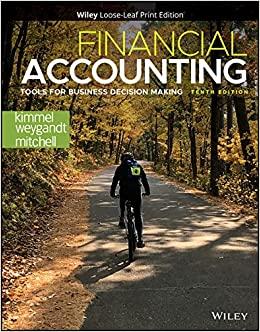Question
You, CPA, are the controller for Wooden Toys Inc. (WTI), a company that manufactures wooden toys for toddlers. The company prides itself on producing high-quality
You, CPA, are the controller for Wooden Toys Inc. (WTI), a company that manufactures wooden toys for toddlers. The company prides itself on producing high-quality toys made with sustainable wood sourced from well-managed forests.
During a meeting, your boss, Anita Pulitzer, CFO, provided details on some accounting issues that were discovered during the recent audit work (Appendix I). She would like you to provide an analysis of these issues, which she will use to corroborate the auditors' proposed adjustments to the financial statements for the year ending December 31, 2020. WTI reports its financial statements in accordance with Accounting Standards for Private Enterprises (ASPE).
Anita also mentioned that the auditors provided her with a memo outlining concerns related to several weaknesses with the capital asset identified during the year-end audit (Appendix II). Anita would like to take this opportunity to improve WTI's processes and controls because she must approach the bank next month to obtain additional financing. She would like to prove to the bank that WTI is well run. She is hoping that next year's audit will require no adjustments to the financial statements.
Task #1
Provide Anita with a memo discussing the accounting issues identified in Appendix I.
Task #2
Anita would also like you to explain to her the implication of each control weakness identified and provide a recommendation. She wonders if these weaknesses had any impact on the financial accounting errors identified by the auditors.
Formulate analysis, she asked you to use the following table structure:
Weakness
Implication
Recommendation
Appendix I
Accounting issues
Wooden bicycle segment
Restructuring during the fiscal year led to the decision to discontinue the wooden bicycle segment, on November 20, 2020. This segment represents a major line of business. Relevant information about this decision is as follows:
The segment incurred a loss of $283,500 for the year.
Estimated costs to dispose of the segment are $300,000. A broker has been hired for the transaction and the assets of the segment are currently advertised at prices that reflect WTI's best estimate of fair value.
At the time the board decided to dispose of the segment, the fair value of its property, plant, and equipment (PP&E) was estimated to be $7 million and the carrying value of PP&E was $7.9 million. When this analysis was performed, management was surprised to find that many fixed asset acquisitions over the past couple of years were not prudent. Some assets had been purchased at excessive prices and others had been utilized far below capacity.
Carrying value of current assets and all liabilities were equal to fair value. Fair value estimates did not change between November 20 and December 31.
The income tax rate for WTI is 30%.
WTI wrote down the PP&E to $7,000,000 in the 2020 financial statements. The $900,000 loss is reported under "other income and expenses" on the income statement.
Appendix I (continued)
Accounting issues
Fire damage
On February 1, 2021, a fire broke out in one of WTI's manufacturing buildings. By the time the fire was contained, there was significant property damage and some manufacturing assets were unrecognizable. WTI's management has spent considerable time trying to figure out what was lost in order to quantify and support a claim for insurance purposes.
Nothing has been reflected in the 2020 financial statements because the event occurred well after year end.
Depreciation
During December, when depreciation expense was being calculated, it was discovered that several manufacturing assets had been coded to the wrong general ledger account by the accounts payable clerk in the prior fiscal year. The assets had a total cost of $100,000 and, based on being coded as furniture and fixtures, were being depreciated straight-line over 10 years. WTI claims a full year of depreciation in the year of acquisition.
After detecting the issue, management recorded depreciation expense of $30,000 on these assets in 2020 because manufacturing assets should be depreciated straight-line over five years at WTI. This means the cumulative depreciation is now $40,000, as required, and the assets are reported at net book value of $60,000. As changes in depreciation are treated as changes in accounting estimates, the change was made prospectively and there was no need to adjust the prior period financial statements.
Appendix II
Control issues identified
Prepared by M&C LLP
Memo
To:Anita Pulitzer
From:Dustin Reed, Murray and Chan LLP
Subject:Internal control issues
It was great speaking with you yesterday. As I mentioned, we are still finishing up our audit work for WTI. As such, I haven't had a chance to formally provide you with a management letter. However, as you requested, I have outlined the control issues we identified during our audit.
The weaknesses relate to your procedures around capital assets.
Capital asset cycle:
Middle-level management is able to approve asset purchases up to $5,000.
There is no formal asset requisition process.
Managers are able to order items as they see fit. The managers noted that many fixed asset acquisitions over the past few years have not been prudent. Some assets were purchased at excessive prices and others have been utilized far below capacity.
The person who initiates a capital asset order also approves the related supplier invoice.
The accounts payable clerk determines in which account to record capital asset purchases. It was discovered that several manufacturing assets were coded to the wrong general ledger account by the accounts payable clerk in the prior fiscal year.
No capital asset schedule is maintained.
Step by Step Solution
There are 3 Steps involved in it
Step: 1

Get Instant Access to Expert-Tailored Solutions
See step-by-step solutions with expert insights and AI powered tools for academic success
Step: 2

Step: 3

Ace Your Homework with AI
Get the answers you need in no time with our AI-driven, step-by-step assistance
Get Started


